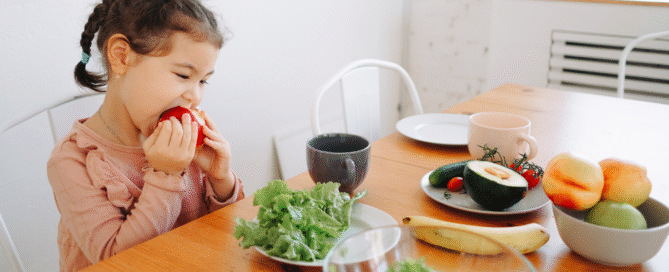Kitchen Habits That Save Water and Energy: Essential Tips for a Sustainable Home
In today’s world, conserving water and energy has become more critical than ever. Small changes in kitchen habits can lead to significant savings in both resources and utility bills. Implementing strategies like using energy-efficient appliances, optimizing cooking methods, and practicing mindful water usage can make a meaningful impact.
Many individuals are unaware of the simple adjustments they can make that not only benefit the environment but also enhance their cooking efficiency. For example, washing dishes in a basin rather than under running water and using pots with tight-fitting lids can drastically reduce water and energy consumption. Another example can be to ensure that the plumbing is free of leaks and functioning properly. Addressing these issues immediately, whether through a simple DIY fix or calling a professional plumber from Showtime Express Plumbing or similar firms, can be an important step in successful water conservation.
By adopting these conscious practices, anyone can contribute to a sustainable future while enjoying the added financial benefits. This blog post will explore various techniques to transform kitchen routines into eco-friendly habits.
Adopting Smart Kitchen Habits for Water and Energy Savings
Making conscious choices in the kitchen can significantly impact water and energy consumption. By implementing specific habits, individuals can save resources, reduce bills, and contribute to sustainability efforts.
Conscious Water Usage During Food Preparation
To conserve water while preparing meals, individuals should start by rinsing vegetables in a bowl instead of under running water. This method saves water while also allowing for the collection and reuse of that water for plants.
Additionally, adjusting the way pasta and grains are cooked can also help. Using larger pots and only enough water to cover the food reduces waste. Finally, soaking dishes and utensils before washing eliminates the need for excessive rinsing, providing better conservation over traditional rinsing techniques.
Mindful Cooking Techniques for Efficient Energy Use
Energy-efficient cooking techniques are essential for reducing energy use. Using lids on pots helps retain heat, allowing food to cook more quickly. As a result, less energy is consumed.
Using microwaves or slow cookers instead of conventional ovens also saves energy. These appliances typically require less time and energy to produce the same results. Additionally, preparing multiple meals at once can optimize oven usage and cut energy costs over an extended period.
Integrating Water-Saving and Energy-Saving Routines
Creating a routine that incorporates both water and energy-saving practices can be beneficial. For instance, filling the dishwasher and washing machine to capacity before running ensures that water and energy are used efficiently.
Regularly checking appliances for leaks can help conserve water and prevent increased energy costs. Individuals should also consider using energy-efficient appliances that are rated for low water and energy use. Simple adjustments, such as turning off the oven a few minutes early or utilizing residual heat, can maximize savings.
Where small leaks or faulty valves are discovered, acting quickly minimises water loss and prevents higher energy bills from malfunctioning appliances. For readers, having a reliable contact for emergency plumbing can make that response practical and timely; services offering rapid response, clear pricing and around-the-clock availability help ensure problems are resolved before they escalate.
For example, reaching out to sites like pm247.co.uk/services/plumbing/ can be a useful resource when burst pipes or severe leaks are suspected. Knowing who to call and what immediate steps to take — shut off isolation valves, turn off affected appliances and document the issue — keeps repairs efficient and reduces waste.
Upgrading Appliances and Tools for Maximum Efficiency
Investing in modern appliances and tools can lead to significant savings in both water and energy. By selecting energy-efficient options and installing water-saving fixtures, individuals can contribute to sustainability efforts while reducing their energy bills.
Choosing Energy-Efficient Products for the Kitchen
Selecting appliances with high energy-efficiency ratings is crucial. Look for products labeled with Energy Star certification, as these meet strict energy efficiency guidelines.
Key appliances to consider include:
- Refrigerators: Modern models can use up to 50% less energy than older ones.
- Dishwashers: Efficient models use less water and energy per cycle.
- Ovens and Stoves: Induction cooktops are more energy-efficient than traditional electric or gas stoves.
Investing in these products can lead to reduced energy consumption and lower monthly energy bills. It’s also important to consider the lifespan and durability of appliances to enhance sustainability.
Installing Water-Efficient Fixtures
Upgrading kitchen fixtures can significantly improve water efficiency. Installing low-flow faucets and aerators can reduce water use without sacrificing performance.
Consider these options:
- Low-Flow Faucets: These can reduce water flow by up to 30%.
- Water-Saving Dishwashers: These appliances often require less water per cycle than washing by hand.
- Smart Sprinkler Systems: If watering plants in the kitchen area, smart systems adjust based on local weather conditions.
These fixtures not only conserve water but also contribute to lowering utility costs while promoting sustainable practices in the kitchen. However, if fixtures like sprinklers aren’t maintained properly, they can lead to unnecessary water waste and higher bills over time. In such cases, reaching out for sprinkler system valve repair from experienced professionals can help resolve the issues and prevent further water waste.
Enhancing Sustainability through Daily Practices
Daily kitchen habits significantly impact sustainability. By focusing on reducing food waste and optimizing meal planning, individuals can promote responsible resource use, contributing to a lowered carbon footprint.
Reducing Food Waste and Composting
Food waste represents a significant environmental challenge. Approximately 30-40% of the food supply in the United States is wasted. This not only contributes to landfill overflow but also increases greenhouse gases as decomposing food releases methane.
Implementing composting can mitigate some of this waste. Composting transforms scraps into nutrient-rich soil. It reduces the need for chemical fertilizers and enhances soil health.
To start composting, consider the following items:
- Fruit and vegetable scraps
- Coffee grounds
- Eggshells
- Grass clippings
Avoid composting meats, dairy, and oily foods, as they attract pests. Reducing food waste through composting helps close the nutrient loop and supports sustainable agriculture while enriching gardens and reducing waste.
Strategic Meal Planning to Optimize Resource Use
Strategic meal planning is vital for maximizing resources in the kitchen. By preparing a week’s menu, individuals can ensure they buy only what they need, reducing unnecessary purchases and storage waste.
Start by evaluating what ingredients are already available. This can prevent duplicate purchases and minimize spoilage.
A few key strategies include:
- Create a Shopping List: Align the list with planned meals to avoid impulse buys.
- Batch Cooking: Prepare multiple meals at once to save time and energy.
- Utilize Leftovers: Convert leftovers into new dishes, further reducing waste.
These practices not only support sustainability but also streamline cooking processes, making it easier to maintain a balanced diet while achieving an environmentally friendly kitchen.
Optimizing Lighting and Power Consumption in the Kitchen
Efficient lighting and power consumption are crucial aspects of creating a sustainable kitchen environment. By focusing on energy-efficient bulbs and implementing smart lighting habits, significant savings on energy bills can be achieved.
Switching to Energy-Efficient Bulbs
Energy-efficient bulbs, such as LED and CFL, are specifically designed to consume less electricity while providing the same brightness as traditional incandescent bulbs. LEDs use up to 75% less energy and last 25 times longer than incandescent bulbs.
Benefits of Energy-Efficient Bulbs:
- Lower Energy Bills: Reduced energy consumption leads to significant savings over time.
- Longer Lifespan: These bulbs reduce the frequency of replacements, lowering waste.
- Less Heat Output: Energy-efficient bulbs generate less heat, reducing cooling costs.
Choosing bulbs with the ENERGY STAR label can ensure high efficiency and performance. Installing these in the kitchen will not only save money but also contribute to a more sustainable household.
Smart Lighting Habits for Energy Conservation
Implementing smart habits is essential for lowering energy consumption in the kitchen. Simple actions can yield substantial energy savings.
Key Practices Include:
- Utilizing Natural Light: Open curtains or blinds during the day to minimize artificial lighting needs.
- Task Lighting: Use task lighting for specific work areas. This allows for targeted brightness while reducing overall usage.
- Dimming Switches: Installing dimmer switches can adjust light levels according to specific tasks or moods, thus conserving energy.
Turning off lights when they are not needed is fundamental. Additionally, considering smart lighting systems that can be controlled via smartphone apps introduces convenience and control over energy consumption patterns.31/03/2025
















